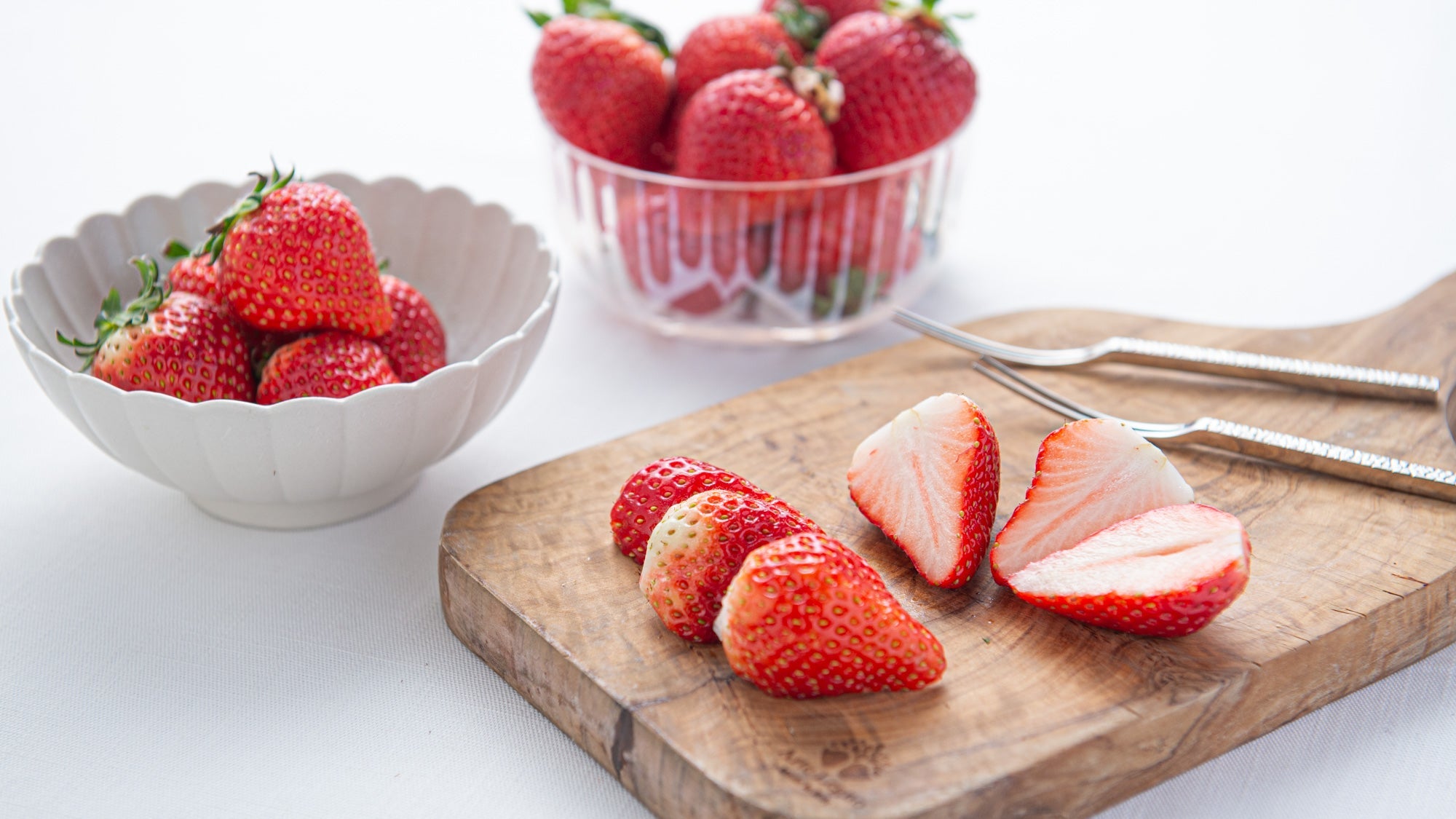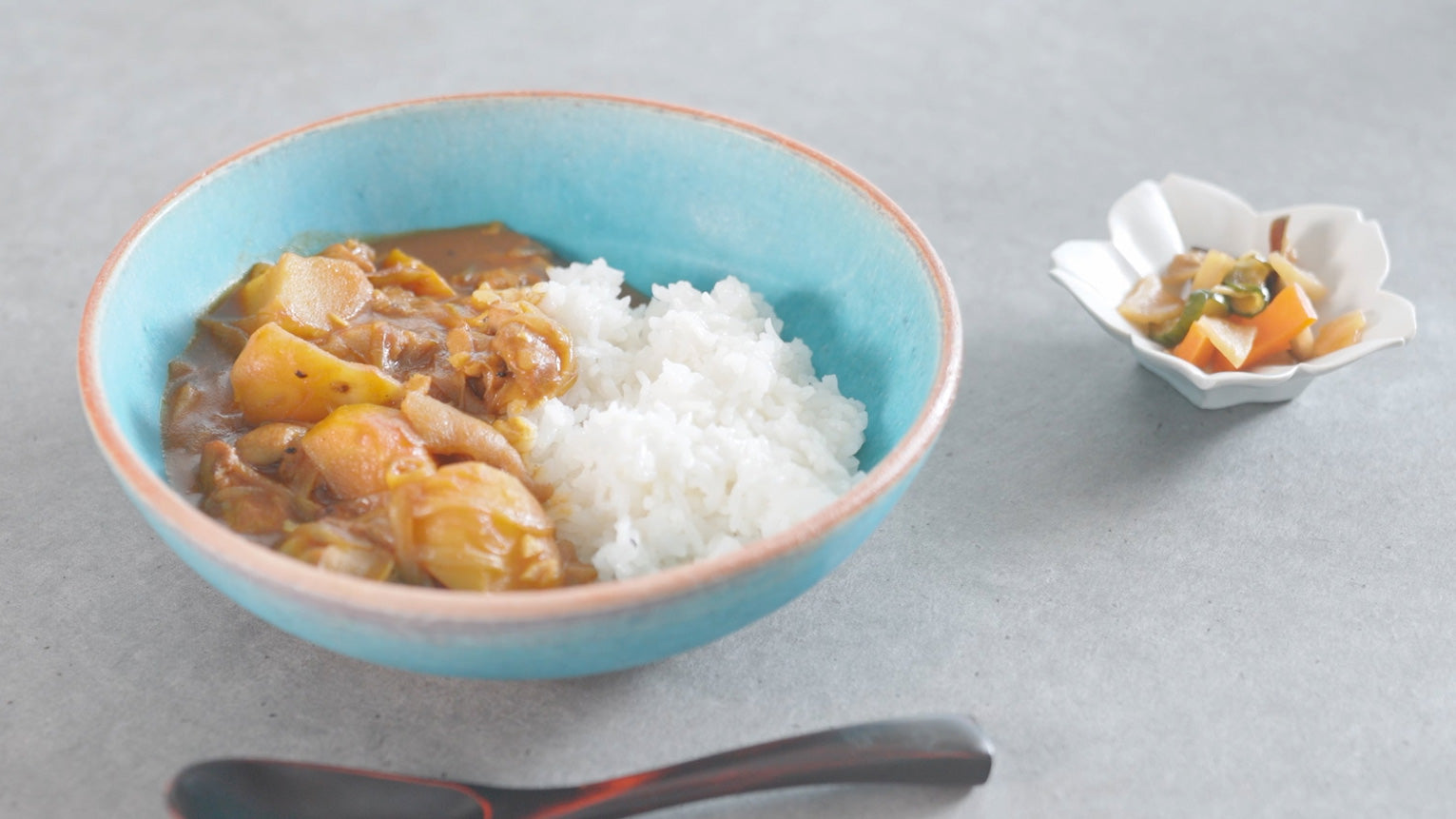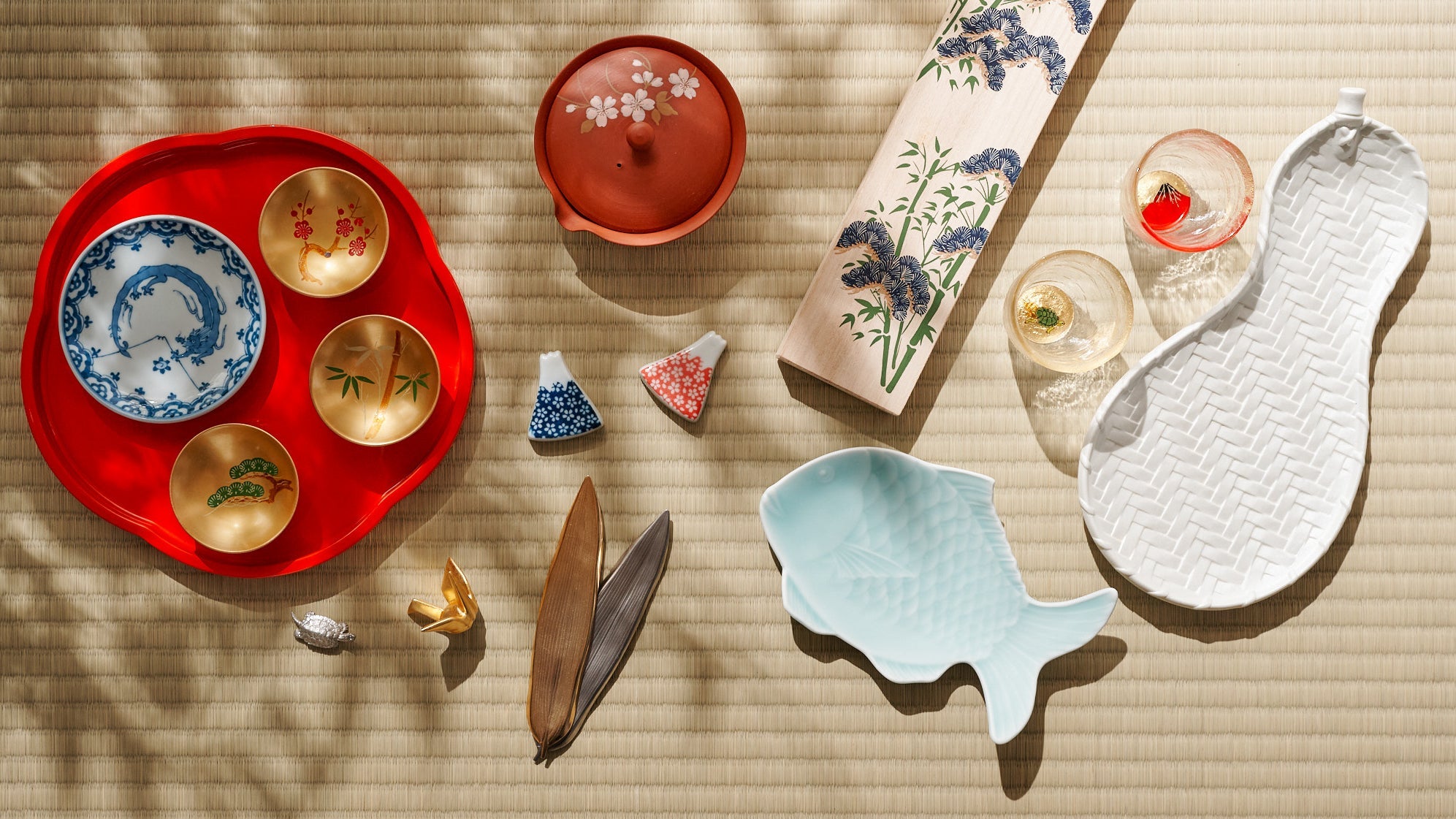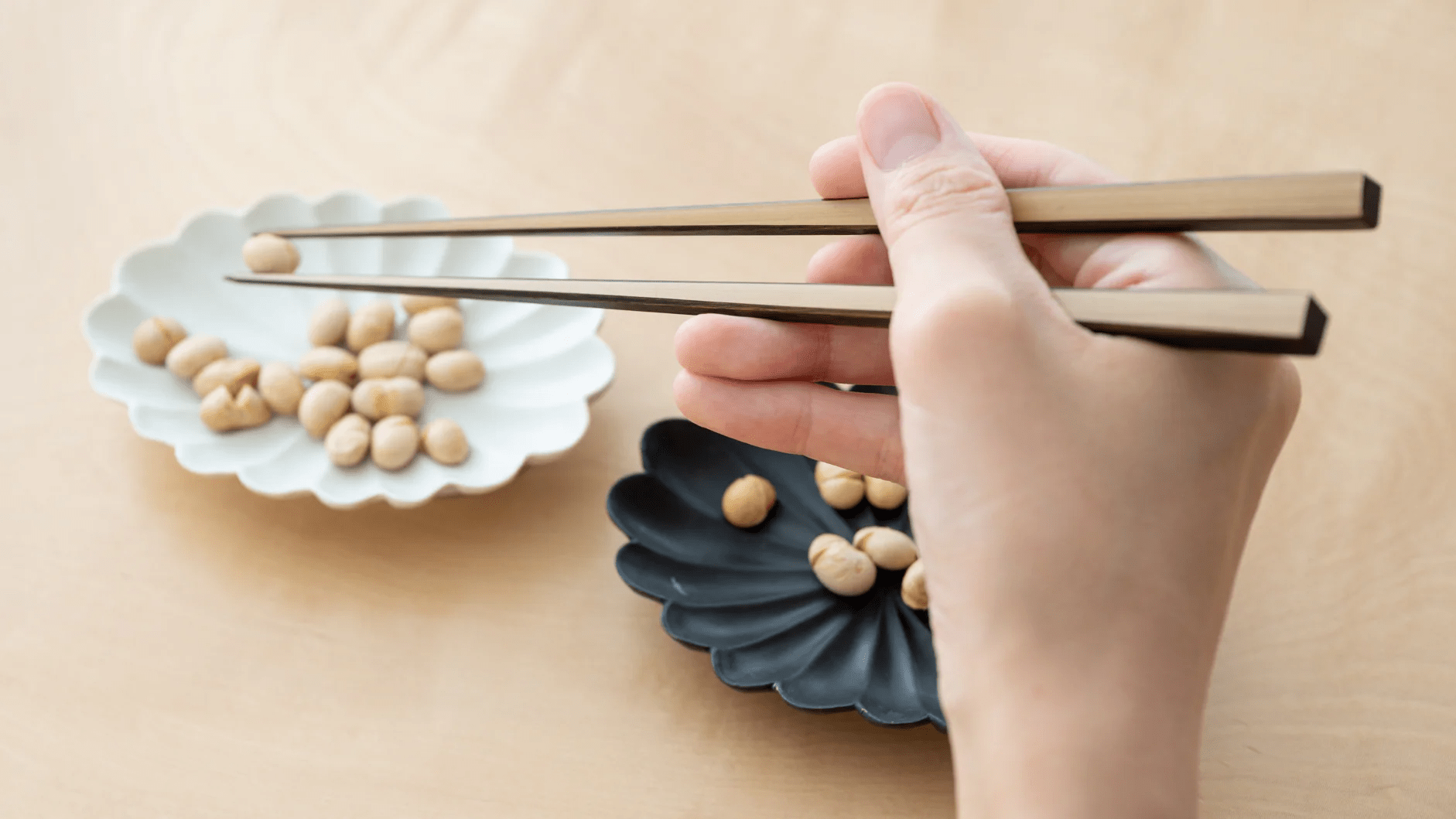
Japanese Strawberries: the Herald of Spring
Written by Team MUSUBI
Japanese strawberries are beloved for their rich fragrance and exceptional sweetness. With over 300 varieties cultivated across the country, their flavors vary depending on the region and harvest season. In some areas, strawberries appear in stores as early as January, making them a cherished symbol of spring’s arrival.
This article explores the unique characteristics of Japanese strawberries, introduces some of the most popular varieties, and showcases delightful sweets made with these luscious berries.

Table of contents
The History of Strawberries in Japan
Strawberries were first introduced to Japan in the mid-19th century, the late Edo period, brought from the Netherlands to Nagasaki. At the time, they were called “Oranda ichigo” (Dutch strawberries) and primarily used as medicinal plants or for ornamental purposes, rather than for consumption. Later, they were cultivated as ornamental plants and gradually spread across the country.
During the Meiji era (1868–1912 CE), strawberries began to be recognized as an edible fruit. With the influence of Western culture, their vibrant red color and beautiful appearance captured people's interest. From the Taisho era (1912–1926 CE) to the early Showa era (1926–1989 CE), strawberry cultivation expanded significantly, marking the beginning of large-scale domestic production. Through selective breeding, varieties suited to Japan's climate were developed, laying the foundation for the country's thriving strawberry industry.
After World War II, Japan's rapid economic growth led to advancements in greenhouse cultivation and breeding techniques. By the 1960s, fresh strawberries became available even in winter. Today, Japan continues to produce incredibly sweet and flavorful varieties, earning high praise both domestically and internationally.

Unveiling the Essence of Sweetness
In many countries, strawberries tend to be more tart and are commonly used as ingredients for jams and desserts. Additionally, they are often cultivated with firmer flesh to withstand transportation.
In contrast, Japanese strawberries are prized for their rich sweetness and juicy texture that burst with flavor upon the first bite. This remarkable sweetness is largely attributed to Japan’s unique climate and advanced cultivation techniques.
For example, Tochigi Prefecture, Japan’s leading strawberry-producing region, offers ideal conditions for strawberry farming—ample sunlight, pristine water, and fertile soil. Its cold climate slows fruit growth, allowing more sugars to accumulate. Significant temperature differences between day and night further enhance the strawberries’ sweetness.

Decades of meticulous breeding have also played a crucial role in perfecting the taste of Japanese strawberries. Researchers carefully crossbreed varieties to enhance their sweetness, fragrance, and resistance to diseases.
Cultivation methods further contribute to the superior quality of Japanese strawberries. While large-scale open-field farming is widespread in the U.S., Japan primarily relies on greenhouse cultivation with raised beds. This technique ensures consistent quality, better control over growing conditions, and increased yields.
Thanks to the dedication of farmers and researchers, Japanese strawberries have earned a reputation for being sweet and high in quality. Today, they are gaining international recognition, with exports steadily increasing, making Japanese strawberries a sought-after luxury around the world.
Japan’s Most Beloved Strawberries
Amaou (Fukuoka Prefecture)

Named after the initials of four Japanese words—akai (red), marui (round), okii (large), umai (delicious)—the Amaou strawberry lives up to its name in every way. Its deep crimson hue, plump, rounded shape, and substantial size make it instantly eye-catching. With a robust sweetness that bursts onto the palate, paired with its abundant juiciness, this variety delivers an indulgent and deeply satisfying taste. As Fukuoka’s signature premium strawberry, it enjoys immense popularity both in Japan and abroad.
Beni Hoppe (Shizuoka Prefecture)

The name Beni Hoppe translates to "red cheeks," inspired by the idea that its flavor is so delicious, it’ll make your cheeks tingle with delight. With firm, succulent flesh, this variety strikes a perfect balance between sweetness and acidity, resulting in a rich, full-bodied taste. Each berry ripens to a vivid red, from stem to tip, making it as visually appealing as it is delicious. Enjoyed fresh and often used in desserts and sweet treats, Beni Hoppe is a favorite among strawberry enthusiasts.
Tochiotome (Tochigi Prefecture)

As the most commonly sold strawberry variety in Japan, Tochiotome is widely available across Japan. Known for a pleasing harmony of sweetness and acidity, a mild tartness enhances its natural flavor. Tochiotome’s firm flesh allows it to stay fresh longer and makes it well-suited for transportation. A signature variety of Tochigi Prefecture, it has enjoyed steady popularity for many years.
Skyberry (Tochigi Prefecture)

Introduced as a premium variety that embodies the ideal combination of size, beauty, and flavor, this strawberry boasts an impressively large and impeccably shaped fruit. Its refined sweetness and gentle acidity create a delightful balance, making it highly enjoyable. Renowned as a delicacy, it is also a coveted luxury gift.
White Strawberries

A rare variety with pale white skin, this strawberry offers a gentle sweetness with milder acidity compared to its red counterparts. Its distinctive appearance gives it a sense of exclusivity, making it increasingly popular as an elegant gift and as an ingredient in high-end desserts.
Japanese Strawberry Sweets and Treats
Strawberry Daifuku

A harmonious blend of textures and flavors, strawberry daifuku is a delicate Japanese confection that captivates the senses. Soft and pillowy mochi wraps around a juicy, sweet-tart strawberry, paired with smooth, velvety koshian (sweet red bean paste). This combination of tender, juicy, and creamy textures embodies the elegance of Japanese sweets while subtly reflecting Western influences.
Japanese Strawberry Shortcake

The classic Japanese strawberry shortcake is known for its light, fluffy cake and delicate flavors. Layers of airy sponge cake cradle soft whipped cream, creating a melt-in-the-mouth sensation with every bite. Fresh slices of vibrant strawberries add a burst of natural sweetness and a hint of tartness, beautifully balancing the richness of the cream. Simple yet perfectly combined, this dessert captures the pure, irresistible charm of strawberries.
Strawberry Pocky & Chocolate

Japan’s love for strawberries extends to its fun and flavorful treats. Crispy Pocky biscuit sticks coated in strawberry-infused chocolate and bite-sized strawberry-flavored chocolates offer a delightful fusion of textures and tastes. Pocky offers a crisp texture that pairs well with the sweet and tangy strawberry flavor. The strawberry chocolates, on the other hand, have a smooth, creamy texture with a pleasantly sweet and tangy taste.
Strawberries: A Taste of Spring

In Japan, strawberries are more than just a fruit—they are a symbol of spring’s arrival. Their radiant red hue and luscious sweetness uplift the joy of the season ahead. With many varieties now widely available, they have become an everyday pleasure, while premium brand strawberries remain highly prized for their exquisite appearance and refined flavor, often chosen as elegant gifts.
As spring unfolds, there is no better way to welcome the season than by savoring Japan’s finest strawberries, enjoying their vibrant taste and the delight they bring.








Leave a comment
This site is protected by hCaptcha and the hCaptcha Privacy Policy and Terms of Service apply.